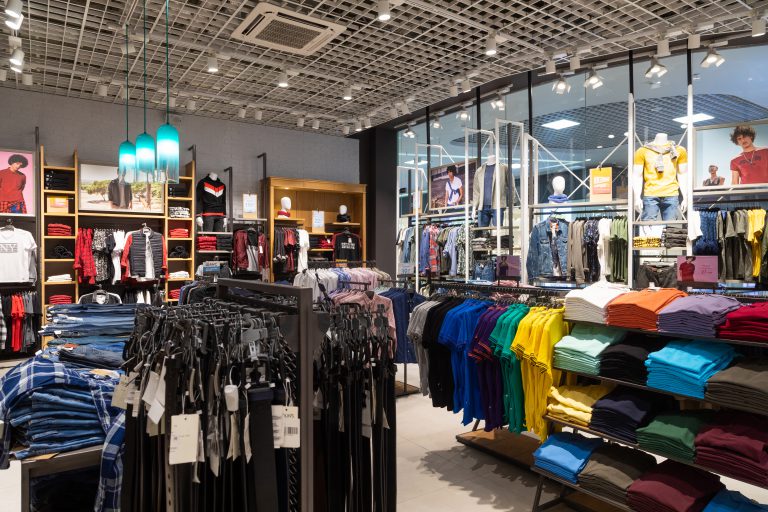In the bustling world of retail, every moment counts and every customer interaction matters. Ensuring health and safety in retail stores for both employees and clients is critical for you. Especially if you are the Health and Safety Leader in your organisation.
With the dynamic nature of retail environments, from constantly shifting inventory to varying foot traffic, maintaining a robust health and safety program is essential.
In this blog, we’ll explore how to improve health and safety in retail stores, starting from implementing daily safety checklists to conducting regular audits.

Understanding the Importance of Health and Safety in Retail
First of all, let’s have a look at the importance of health and safety in retail.
Retail environments present a myriad of potential hazards, ranging from slips and falls to strains and even more severe incidents like fires or medical emergencies. Prioritising health and safety in retail stores fosters a secure environment for everyone. It helps you mitigate risks that could lead to costly liabilities, legal issues, or damage to reputation.
According to industry reports, the retail sector has faced challenges related to injuries and repetitive strain injuries in the last year. Retail workers may also be exposed to hazards such as poorly maintained facilities, inadequate lighting, and ergonomic issues due to prolonged standing or repetitive tasks.
Recent data from the Health and Safety Executive (HSE) reveals that in 2023/24, approximately 1.7 million workers in Great Britain reported suffering from work-related ill health. Notably, 776,000 cases were attributed to stress, depression, or anxiety, highlighting the significant impact of mental health issues in the workplace.
Analysing health and safety incident data in the retail sector can help identify specific risk factors and trends, allowing you to implement targeted interventions to improve safety.
This may include initiatives such as implementing safety checklists and regular audits. In addition to this better safety training programs for employees, improving store layout and signage to reduce trip hazards, and enhancing equipment maintenance protocols to prevent accidents help to improve workplace safety in retail.
Establishing Daily Checklists for Health and Safety in Retail Stores
Daily safety checklists serve as the frontline defence in maintaining a safe environment within retail stores. These checklists should be comprehensive, covering various aspects of the store’s operations and physical space.
Here’s how to implement effective daily safety checklists:
Tailor Checklists to Store Needs: Each retail store may have unique requirements based on its size, layout, merchandise, and potential hazards. Customise checklists to address specific safety concerns relevant to your retail store.
Assign Responsibility: Designate responsible individuals, such as shift managers or team leaders, to oversee the completion of daily safety checklists. Clear accountability ensures that tasks are performed diligently.
Cover Key Areas: Checklists should encompass key areas such as aisle clearance, signage visibility, emergency exits, cleanliness, and equipment maintenance. Regularly inspecting these areas reduces the likelihood of accidents.
Use Checklist Technology: Leverage technology to simplify daily checklists process. Mobile checklist software enable you and your team to easily and quickly collect daily checklist data and review and take action on findings.
Encourage Documentation: Ensure that checklists are documented and stored for future reference. This documentation serves as a record of compliance and facilitates identification of recurring issues for targeted solutions.
Provide Training: Offer comprehensive training to employees on how to conduct safety checks effectively. Empower them to identify potential hazards and take corrective actions promptly.
Implementing Regular Safety Audits
While daily checklists for health and safety in retail stores address immediate concerns, regular audits provide a deeper evaluation of your health and safety program. Audits involve systematic assessments of policies, procedures, and practices to identify areas for improvement.
Regular and consistent audits are essential to promptly identify any issues, performance gaps, or changes within the retail environment. By conducting audits on a routine basis, you can swiftly pinpoint areas requiring improvement and take prompt corrective action.
Generally speaking, an organisation should conduct a safety audit at least once per year. However, some organizations-particularly larger organisations – perform safety audits more often (e.g. every 6 or 3 months) to minimise their risks.
Here’s how to integrate regular audits into your retail health and safety program:
Define Audit Objectives: Clearly outline the objectives and scope of the audit. Determine whether the focus is on compliance with regulations, adherence to internal policies, identification of emerging risks, or a combination of these factors.
Use Audit Management Technology: Leverage technology to streamline the audit process. Audit software enables efficient data collection, real-time reporting, and analysis of audit findings. This will simplify management of internal and external safety audits by storing all related information and records in a central place.
Conduct Thorough Inspections: Audits should encompass all aspects of health and safety, including physical hazards, procedural adherence, staff training, emergency preparedness, and compliance with regulatory requirements.
Engage Stakeholders: Involve stakeholders from various levels of the organisation in the audit process. Input from frontline staff, management, and safety professionals provides diverse perspectives and insights.
Prioritise Continuous Improvement: Use audit findings to drive continuous improvement initiatives. Identify recurring issues, root causes, and trends to implement targeted interventions and preventive measures.
Leveraging Data for Decision-Making in Health and Safety in Retail Stores
Both daily checklists and regular audits generate valuable data that can inform decision-making processes within retail organisations. By analysing trends, identifying patterns, and monitoring key performance indicators (KPIs), you can make data-driven decisions to enhance your health and safety programs.
Here’s how to leverage data effectively:
Track your EHS Metrics: Capturing the right metrics is essential for making informed decisions, proactively managing risks, performance evaluation and maintaining compliance.
Establish relevant EHS metrics to monitor the effectiveness of your health and safety initiatives in retail. Metrics may include injury rates, near-miss incidents, compliance levels, training completion rates, and audit scores.
EHS reporting focuses on the following international reporting measures:
- RIDDOR (Reporting of Injuries, Diseases and Dangerous Occurrences Regulations)
- TRIR (Total Recordable Incident Rate) = Lost Time Incidents + Medical Injuries + Restricted work cases x 200,000 ÷ Total hours worked (recordable in one year)
- DART (Days Away Reportable Total) = Lost Time Incident X 200,000 ÷ Total Hours worked (recordable in one year)
LTI (Loss Time Incident Rate) is a standard OSHA metric that calculates the number of incidents that result in time away from work.
Benchmark your EHS Performance: Compare health and safety performance against industry benchmarks as above or internal standards. Benchmarking provides insights into areas of strength and opportunities for improvement relative to peers or best practices.

Cultivating a Culture of Safety in Retail
Beyond procedural compliance and data analysis, cultivating a culture of safety is instrumental in providing a safe and engaged retail environment. A safety-conscious culture instils awareness, accountability, and proactive behaviour among employees at all levels.
Here’s how to nurture a culture of safety:
Lead by Example: Leadership commitment to safety sets the tone for the entire organisation. Managers and supervisors should demonstrate a visible commitment to safety through their actions and decisions.
Promote Open Communication to increase safety engagement: Encourage open dialogue regarding safety concerns, suggestions, and incident reporting. Create channels for employees to voice their observations and participate in safety-related discussions.
Promote a safety feedback loop within your organisation wherein your teams can provide their safety feedback and observations easily. You can increase worker engagement with safety kiosks in your overall health and safety initiatives. Insights from data analysis from safety observations will enable you to see the trends and help you with the refinement of your health and safety strategies in retail stores. Regularly review and adjust policies, procedures, and training programs based on data-driven insights.
Recognise and Reward Safe Behaviour: Acknowledge and reward employees who demonstrate exemplary safety practices. Positive reinforcement reinforces desired behaviours and motivates others to prioritise safety.
Empower Employees: Empower employees to take ownership of safety by involving them in safety committees, hazard assessments, and improvement initiatives by providing them streamlined ways of managing health and safety with the help of technology.
By actively engaging employees, organisations tap into their expertise and commitment to safety.
Leveraging EHS Software for Enhanced Health and Safety in Retail Stores
Environmental, Health, and Safety (EHS) software offers comprehensive tools and functionalities designed to streamline safety management processes, enhance compliance, and drive continuous improvement. These software platforms serve as centralised hubs for managing all aspects of health and safety, from conducting audits and inspections to tracking incidents and analysing data.
EHSwise EHS software for retail provides retail organisations with a unified platform to standardise safety protocols and procedures across multiple locations. By digitising daily safety checklists and audits, you can ensure consistency in assessments and documentation.
Mobile functionality plays a key role in empowering frontline staff. Team members can easily perform safety checks using mobile devices, capturing real-time information, images and notes on potential hazards. This immediate data capture reduces paperwork, minimises errors and speeds up responses to safety issues.
Moreover, EHS software facilitates proactive risk management through advanced analytics and reporting functionalities. By aggregating data from daily checklists, audits, and other sources, you can gain valuable insights into emerging trends, and opportunities for improvement.
Customisable dashboards and KPI tracking tools empower you to monitor key safety metrics, benchmark performance against targets, and demonstrate compliance with regulatory requirements.
Furthermore, EHS software helps you promote collaboration and communication among your teams involved in safety management. Centralised repositories for safety documentation, policies, and training records ensure that employees have access to up-to-date information and resources.
Collaboration features such as task assignment, notifications, and workflow automation streamline communication between your safety teams, managers, and frontline staff. This facilitates timely resolution of safety issues and implementation of corrective actions.
In summary, EHSwise EHS software serves as a powerful tool for modernising and optimising health and safety in retail stores. By leveraging EHSwise to digitise processes, you can enhance safety performance, mitigate risks, and create environments where employees and customers feel safe and supported.


